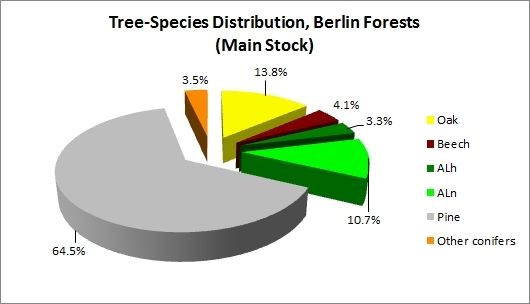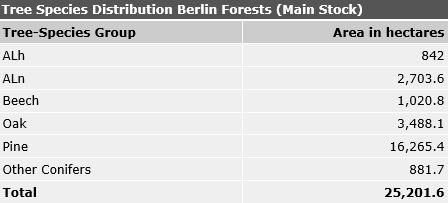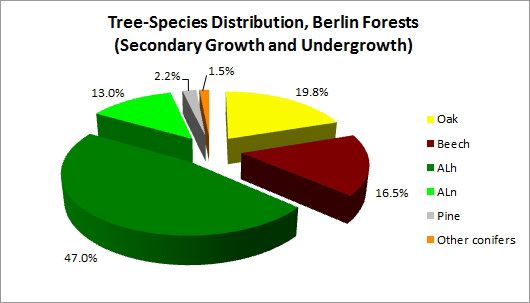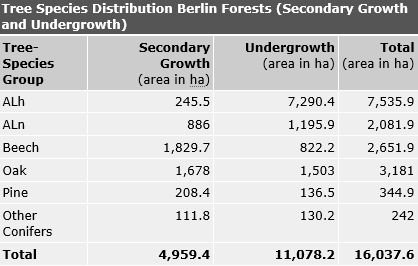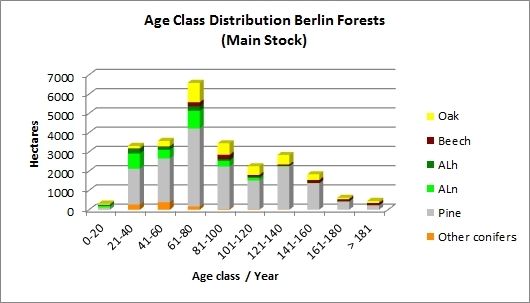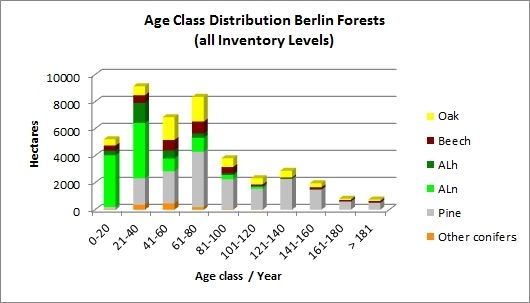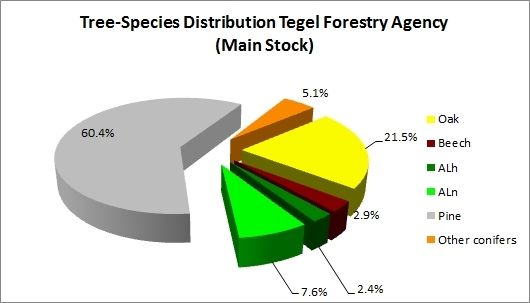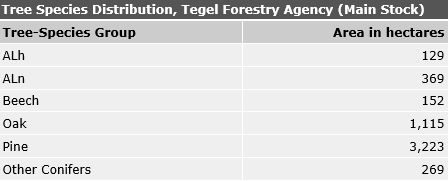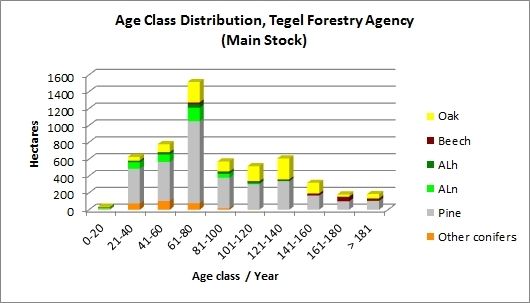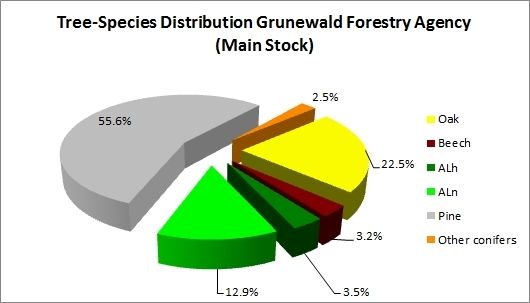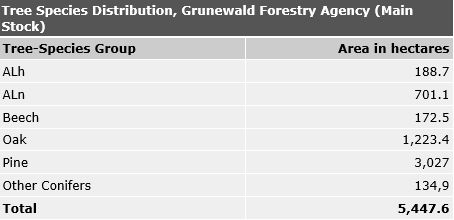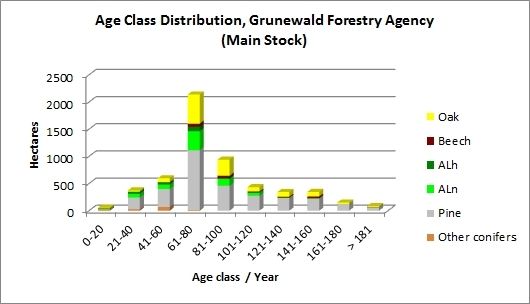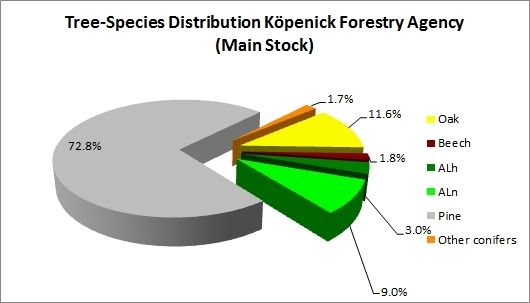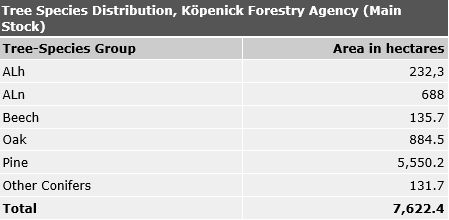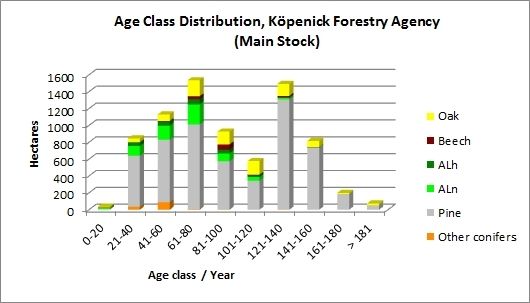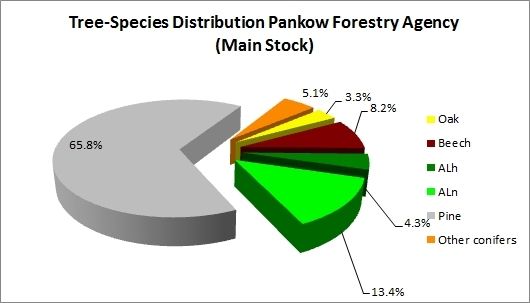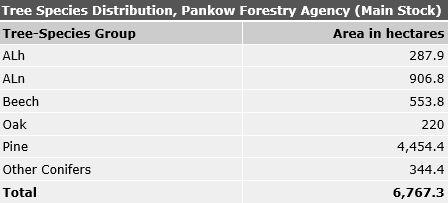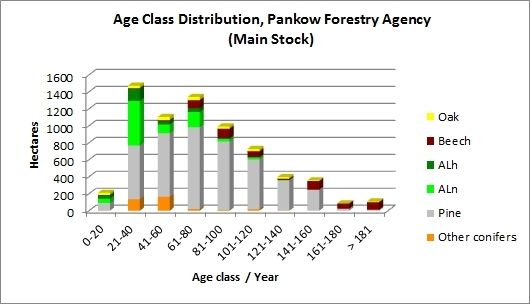Tree Species Distribution, Total Area of the Berlin Forests
The distribution of tree species groups in the main stock of the Berlin forests shows the pine with 64.5 % and the oak with 13.8 %, while 10.7 % of the areas are stocked with birch and 4.1 % with beech. Hornbeam, maple, elm and other deciduous hardwoods account for 3.3 %, while fir, Douglas fir, larch and other conifers make up 3.5 % of the total area. Figure 2 and the corresponding Table show an overview of the distribution of tree species in the Berlin forests and the differences between the Forestry Agencies.

